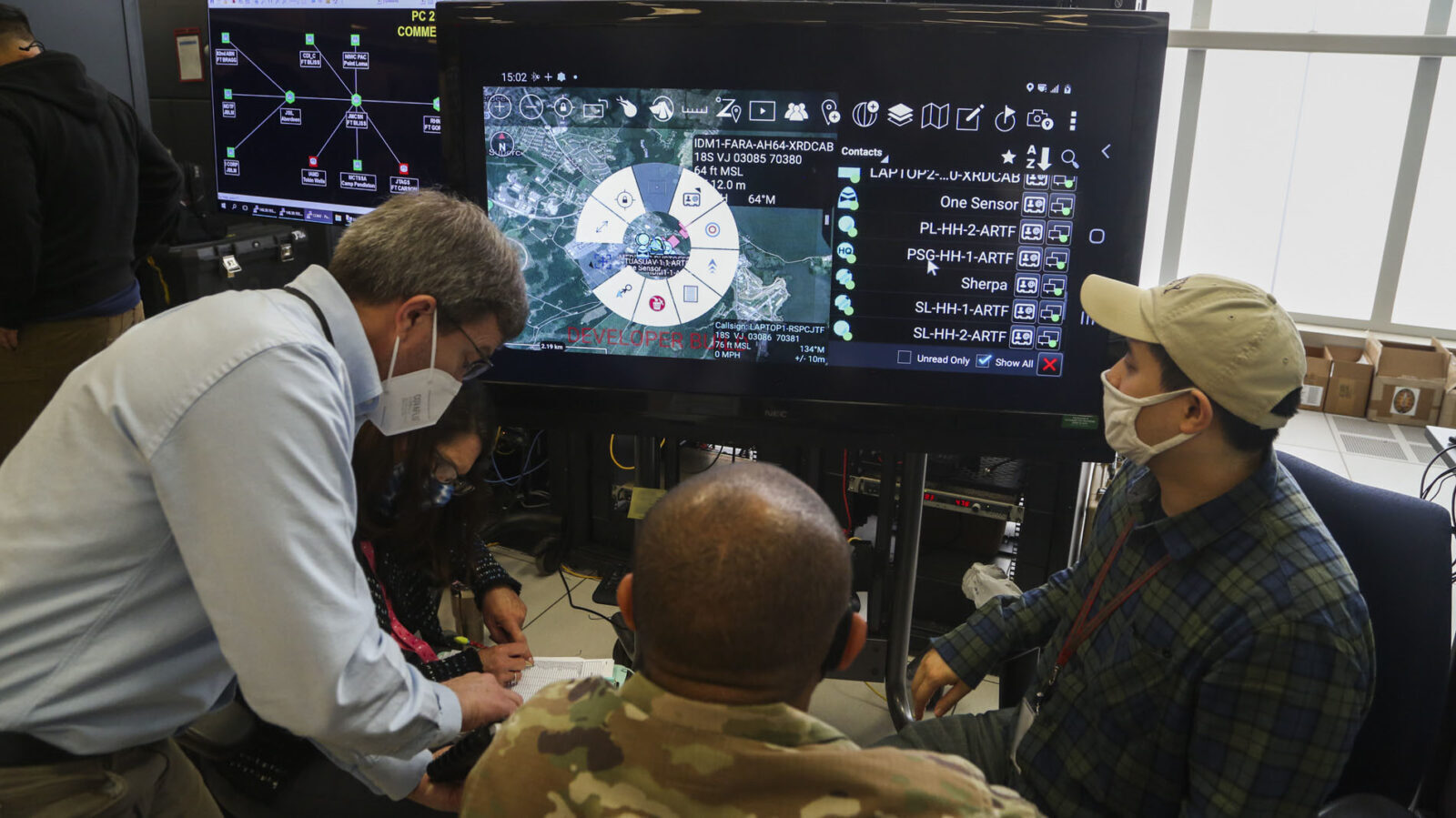
The Army’s Joint Systems Integration Laboratory hosted its second communications exercise (COMMEX 2) at Aberdeen Proving Ground April 5-16. (Kaitlin Newman/US Army)
WASHINGTON: The Pentagon cross-functional team overseeing efforts to connect sensors and shooters for the military’s ambitious JADC2 initiative could phase out in the next three to five years, according to a top general.
Lt. Gen. Dennis Crall, CIO/J6 of the Joint Chiefs of Staff, said Thursday that the Joint All Domain Command and Control Cross-Functional Team (JADC2-CFT) could phase out as the military services make progress rolling out capabilities to enable JADC2.
“If you ask the vice chairman [of the Joint Chiefs of Staff Gen. John Hyten] today, he would say that’s probably a three- to five-year journey,” Crall said. “He expects us to work our way out of the job in the cross-functional team in three to five years.”
RELATED: An AI ‘brain’ for bandwidth: Peraton nabs DoD spectrum award, eyes JADC2
JADC2 is a Pentagon-wide concept to efficiently share streams of battlefield information from myriad systems to provide commanders with unprecedented amounts of data to make decisions. The networked battlefield is how the military expects that it will have to fight in the future against peer competitors China and Russia. But JADC2 is also an ambitious, extremely complicated initiative involving separate development projects in each of the major military branches, each with their own technological and bureaucratic complexities.
The JADC2-CFT was chartered by the deputy secretary of defense and serves as a broker between the Joint Requirements Oversight Council, headed by Hyten, and the services as they build out their JADC2 contributions. The CFT has a role in ensuring that requirements and acquisition plans conform to the JADC2 strategy, as well as de-conflicting competing JADC2 efforts between the services.
But while the CFT exists to oversee the broader aspects of JADC2, it doesn’t direct the services how to develop their joint war-fighting systems, raising questions about who is accountable or responsible for JADC2. A recent report from the Center for Strategic and International Studies that warned the DoD risked failure unless the effort is run by a central authority at the Defense Department, such as a joint program office or other constructs.
RELATED: JADC2 will fail without central DoD authority, study says
Crall defended the current JADC2 structure at the conference, arguing that it was key to building JADC2 with speed.
“The pro of a cross-functional team is that it can move out very quickly,” Crall said at the National Defense Industrial Association Special Operations/Low-Intensity Conflict conference. “It’s not encumbered by some of the difficulties you have in some of the program offices. It’s also fairly agnostic, right? It doesn’t have one service’s equity at hand. It can it can be kind of a neutral ground of sorts, but one of the biggest advantages is it can take risk. Unfortunately one of the aspects in our program offices is that we try and burn all risk out of something.”
RELATED: ‘Going digital is a mindset, it’s a culture change,’ Army CIO says
Crall said that in setting up the CFT, DoD officials at the time considered other types of organizations — like a program office — but settled on the CFT structure of governance because it offered faster speeds and allowed for the connection between requirements and acquisition.
To move faster, defense officials like Crall have asked Congress for funding that would give the JADC2-CFT the ability to experiment with new enabling technologies. The Senate Armed Services Committee’s fiscal 2022 National Defense Authorization Act includes a $25 million authorization for JADC2 experimentation.
The Pentagon has publicly identified seven minimum viable products that need to roll out in order to enable JADC2, including anti-access/area denial capabilities, cybersecurity and cloud needs
“Once JADC2 has irreversible momentum and is demonstrating these minimal viable products moving out, then we can talk about where to house these things better,” Crall said.






















